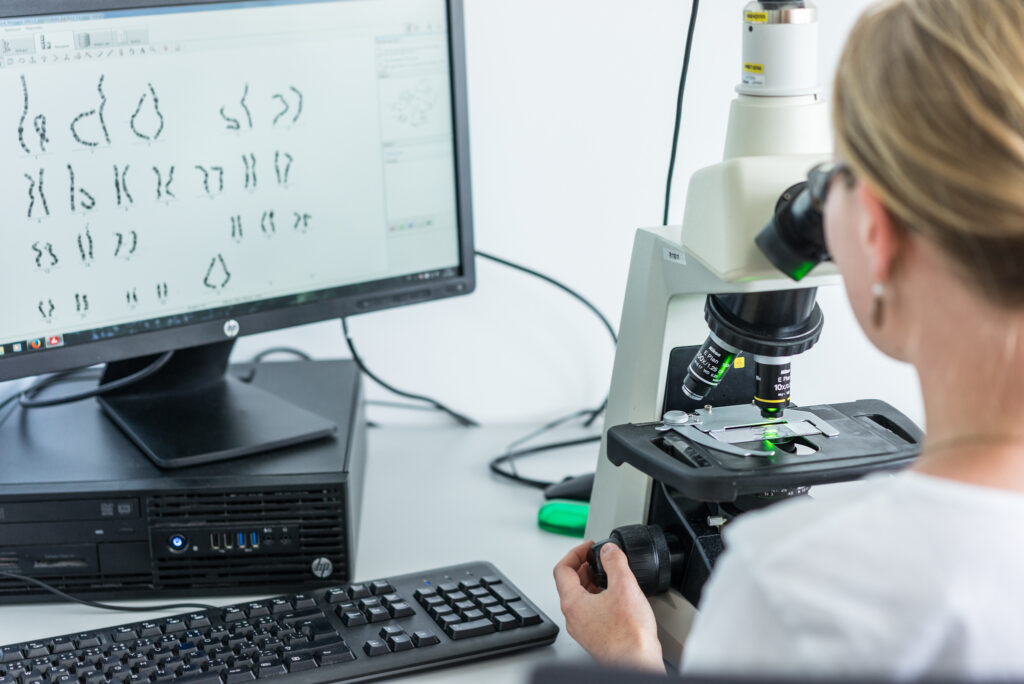DNA is the essence of our uniqueness and testing is a modern phenomenon. Not surprisingly, its results can have a huge impact on the health and future lives of our offspring. You’ve probably heard of genetic testing during pregnancy. You may also know that couples undergoing assisted reproduction can have their embryo tested before it is implanted into the mother’s uterus. But have you ever heard of predictive genetic testing or DNA testing of both partners before conception?
What is PANDA and what are its advantages?
One such predictive genetic testing tool is the PANDA test, which was developed by the Repromeda clinic in Brno. The PANDA test investigates hundreds of mutations and variants in DNA, helping to identify the causes of infertility and determine appropriate treatment. At the same time, it also identifies the reasons for recurrent miscarriages and allows the diagnosis of thrombophilic mutations and the four most common rare recessive hereditary diseases, such as cystic fibrosis, spinal muscular atrophy, deafness and fragile X syndrome.
The test was developed especially for couples who have having trouble conceiving and use assisted reproduction methods. However, infertility is not the only problem faced by couples longing for a baby. The test is also suitable for couples who are trying to conceive naturally as well. The test is most often recommended in cases where a woman has repeated miscarriages, or for couples who have a family history of some serious genetic disease.
I don’t think I have a fertility problem, why should I get tested?
Even if you feel completely healthy and your partner seems to be, you may be a carrier of a genetic disease. It didn’t have to show up in you or your partner, it doesn’t limit you in any way in everyday life, and you may not even know that you have this disposition for a serious congenital disease inside you. However, the problem arises when planning a family. The chances that a couple in which both parents are carriers of the same recessive (hidden) disease will have a child who suffers from a disease are quite high. Specifically, there is a 25% risk that the disease will manifest in the offspring. To avoid these risks, it is important that couples are examined before attempting to conceive. We call such testing couples a genetic-reproductive compatibility test. In addition to couples coming to the clinic, all germ cell donors, i.e., egg donors and sperm donors, also pass the PANDA test.

Lots of information from one blood sample
Although it sounds complicated, the PANDA test is not terrifying for patients. Instead, it does a tremendous service. Only blood is taken from both partners, which is then sent to a genetic laboratory. There, geneticists examine selected genes. Mutated genes are usually found when 500 of the population’s most risky genes are examined. Subsequently, the mutated genes in both partners are compared and the already mentioned gene compatibility of the pair is assessed. It provides important information about the health of common future offspring.
The test showed that I am a carrier, do I still have a chance at a healthy child?
Yes, you do. Even if the test reveals that your genes contain predispositions to some of the monogenic diseases or mutations for miscarriage, not everything is lost. Couples who want a healthy baby have the opportunity to use assisted reproduction methods and use pre-implant genetic testing of the embryo before transferring the embryo to the uterus.. Only embryos without mutated genes are then transferred to the mother’s uterus, thus preventing the transmission of the disease to the offspring.


